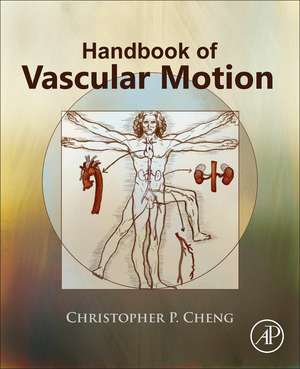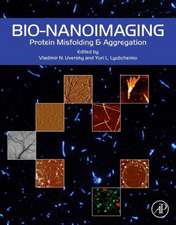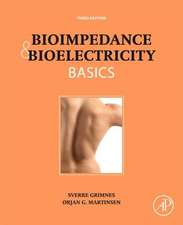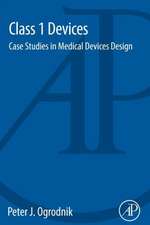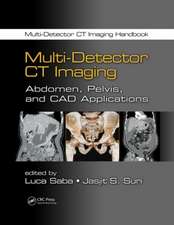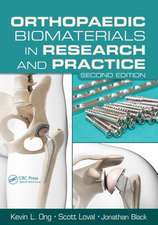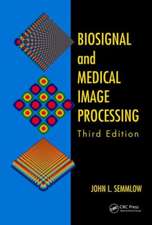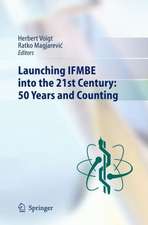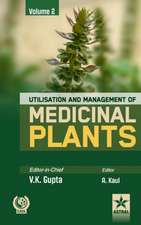Handbook of Vascular Motion
Autor Christopher Chengen Limba Engleză Paperback – 18 iun 2019
- PROSE Book Award Nominee in the "Single Volume Reference Book" category
- Describes methods to quantify vascular motion and deformations including choosing what data to collect, relevant medical imaging, image processing, geometric modeling, and deformation quantification techniques
- Includes deformations for vascular beds of particular importance in medical devices including the coronary arteries and heart, arteries of the head and neck, thoracic aorta and arch branches, abdominal aorta and visceral branches, lower extremity arteries, inferior vena cava, and lower extremity veins
- Explains how to convert raw deformations into boundary conditions suitable for durability evaluation, provides examples of using this information for computational simulations, benchtop testing, and fatigue analysis, and illustrates examples of how vascular motion affect clinical outcomes, product development, and business
Preț: 1187.18 lei
Preț vechi: 1399.32 lei
-15% Nou
Puncte Express: 1781
Preț estimativ în valută:
227.19€ • 246.70$ • 190.84£
227.19€ • 246.70$ • 190.84£
Carte tipărită la comandă
Livrare economică 15-29 aprilie
Livrare express 15-21 martie pentru 186.50 lei
Preluare comenzi: 021 569.72.76
Specificații
ISBN-13: 9780128157138
ISBN-10: 0128157135
Pagini: 410
Dimensiuni: 191 x 235 x 24 mm
Greutate: 0.7 kg
Editura: ELSEVIER SCIENCE
ISBN-10: 0128157135
Pagini: 410
Dimensiuni: 191 x 235 x 24 mm
Greutate: 0.7 kg
Editura: ELSEVIER SCIENCE
Cuprins
1. Introduction
Part I Methods for Quantifying Vascular Deformations2. Deciding What You Need and How to Get It3. Medical Imaging Modalities and Protocols4. Geometric Modeling5. Centerline Deformation Metrics6. Surface Deformation Metrics
Part II Deformations of Vascular Beds Relevant for Medical Devices7. Coronary Blood Vessels8. Neurovascular Blood Vessels9. Thoracic Aorta and Arch Branches10. Abdominal Aorta and Visceral Arteries11. Lower Extremity Arteries12. Inferior Vena Cava and Lower Extremity Veins13. Upper Extremity Blood Vessels
Part III Developing and Utilizing Boundary Conditions14. Developing Boundary Conditions for Durability Evaluation15. Summary of Durability Evaluation Methods16. How to Improve Durability in a Pinch17. Areas of Future Research18. Conclusions
Part I Methods for Quantifying Vascular Deformations2. Deciding What You Need and How to Get It3. Medical Imaging Modalities and Protocols4. Geometric Modeling5. Centerline Deformation Metrics6. Surface Deformation Metrics
Part II Deformations of Vascular Beds Relevant for Medical Devices7. Coronary Blood Vessels8. Neurovascular Blood Vessels9. Thoracic Aorta and Arch Branches10. Abdominal Aorta and Visceral Arteries11. Lower Extremity Arteries12. Inferior Vena Cava and Lower Extremity Veins13. Upper Extremity Blood Vessels
Part III Developing and Utilizing Boundary Conditions14. Developing Boundary Conditions for Durability Evaluation15. Summary of Durability Evaluation Methods16. How to Improve Durability in a Pinch17. Areas of Future Research18. Conclusions
Recenzii
"It’s exciting when a new field opens up -- and that’s where we are with vascular motion. Dr. Cheng has provided a clear and highly readable overview of the medical and engineering science surrounding the motion of vessels and the consequences for treatments and technologies. As a bonus, the book is sprinkled with some intriguing hints of new things to come as clinicians, investigators, and inventors pursue this rapidly evolving area." --Paul G. Yock – Interventional Cardiologist, Martha Meier Weiland Professor of Medicine, Professor of Bioengineering and Mechanical Engineering (by courtesy), & Director of Byers Center for Biodesign, Stanford University, Stanford, CA
"This first of its kind textbook deals with topics that will gain increasing importance as endovascular grafts are increasingly used to treat vascular lesions. These endografts have to dwell and function in a hostile vascular environment governed by some of the forces described in this unique text. Overcoming these forces is a key challenge for the future. This book will help meet that challenge." --Frank J. Veith – Vascular Surgeon, Professor of Surgery, New York University, New York, NY and Director of VEITHsymposium
"Handbook of Vascular Motion is destined to be a ‘must-read’ for all those interested in the human vascular system. From anatomists to physiologists, vascular clinicians to sports medicine practitioners, biomedical engineers to medical device entrepreneurs, all will find that this special volume provides enlightening evidence of how data-driven insights have dramatically enhanced our understanding of vascular motion and its impact on normal function, development of vascular disease, and design of durable vascular implants. Indeed, Professor Cheng's superb text tackles a previously unaddressed need in an increasingly relevant field of study by focusing on how motion in a wide range of vascular beds impacts the design and performance of medical devices. It is the first comprehensive source to provide a well-organized presentation of the important considerations, including previously unpublished scientific and computational data that underpin the influential effects of vascular motion in humans." --Michael D. Dake – Interventional Radiologist, Senior Vice President of University of Arizona Health Sciences & Professor of Medical Imaging, Surgery, and Medicine, University of Arizona, Tuscon, AZ
"I very much enjoyed reading this book which provides a wealth of information on the complex and dynamic movement of blood vessels and how this motion can affect the effectiveness and durability of intravascular devices used to treat cardiovascular disease. We have witnessed remarkable advances in the sophistication and effectiveness of implanted medical devices used to treat cardiovascular disease, which is the number one cause of death and disability in the world. However, our understanding of the biomechanical forces acting on these devices as a result of the complex, dynamic movement of blood vessels in everyday life is limited. This is the first book to bring together the large body of scientific information on the movement of blood vessels to show how this motion can impact the durability and function of implanted devices. This book is a must read and reference source for physicians, scientists, biomedical engineers, medical device developers, safety engineers, and regulators who have an interest in improving the treatment of cardiovascular disease." --Christopher K. Zarins – Vascular Surgeon, Emeritus Professor of Surgery, Stanford University, Stanford, CA & Co-Founder and Senior VP of Medical Affairs, HeartFlow, Inc., Redwood City, CA
"This first of its kind textbook deals with topics that will gain increasing importance as endovascular grafts are increasingly used to treat vascular lesions. These endografts have to dwell and function in a hostile vascular environment governed by some of the forces described in this unique text. Overcoming these forces is a key challenge for the future. This book will help meet that challenge." --Frank J. Veith – Vascular Surgeon, Professor of Surgery, New York University, New York, NY and Director of VEITHsymposium
"Handbook of Vascular Motion is destined to be a ‘must-read’ for all those interested in the human vascular system. From anatomists to physiologists, vascular clinicians to sports medicine practitioners, biomedical engineers to medical device entrepreneurs, all will find that this special volume provides enlightening evidence of how data-driven insights have dramatically enhanced our understanding of vascular motion and its impact on normal function, development of vascular disease, and design of durable vascular implants. Indeed, Professor Cheng's superb text tackles a previously unaddressed need in an increasingly relevant field of study by focusing on how motion in a wide range of vascular beds impacts the design and performance of medical devices. It is the first comprehensive source to provide a well-organized presentation of the important considerations, including previously unpublished scientific and computational data that underpin the influential effects of vascular motion in humans." --Michael D. Dake – Interventional Radiologist, Senior Vice President of University of Arizona Health Sciences & Professor of Medical Imaging, Surgery, and Medicine, University of Arizona, Tuscon, AZ
"I very much enjoyed reading this book which provides a wealth of information on the complex and dynamic movement of blood vessels and how this motion can affect the effectiveness and durability of intravascular devices used to treat cardiovascular disease. We have witnessed remarkable advances in the sophistication and effectiveness of implanted medical devices used to treat cardiovascular disease, which is the number one cause of death and disability in the world. However, our understanding of the biomechanical forces acting on these devices as a result of the complex, dynamic movement of blood vessels in everyday life is limited. This is the first book to bring together the large body of scientific information on the movement of blood vessels to show how this motion can impact the durability and function of implanted devices. This book is a must read and reference source for physicians, scientists, biomedical engineers, medical device developers, safety engineers, and regulators who have an interest in improving the treatment of cardiovascular disease." --Christopher K. Zarins – Vascular Surgeon, Emeritus Professor of Surgery, Stanford University, Stanford, CA & Co-Founder and Senior VP of Medical Affairs, HeartFlow, Inc., Redwood City, CA
